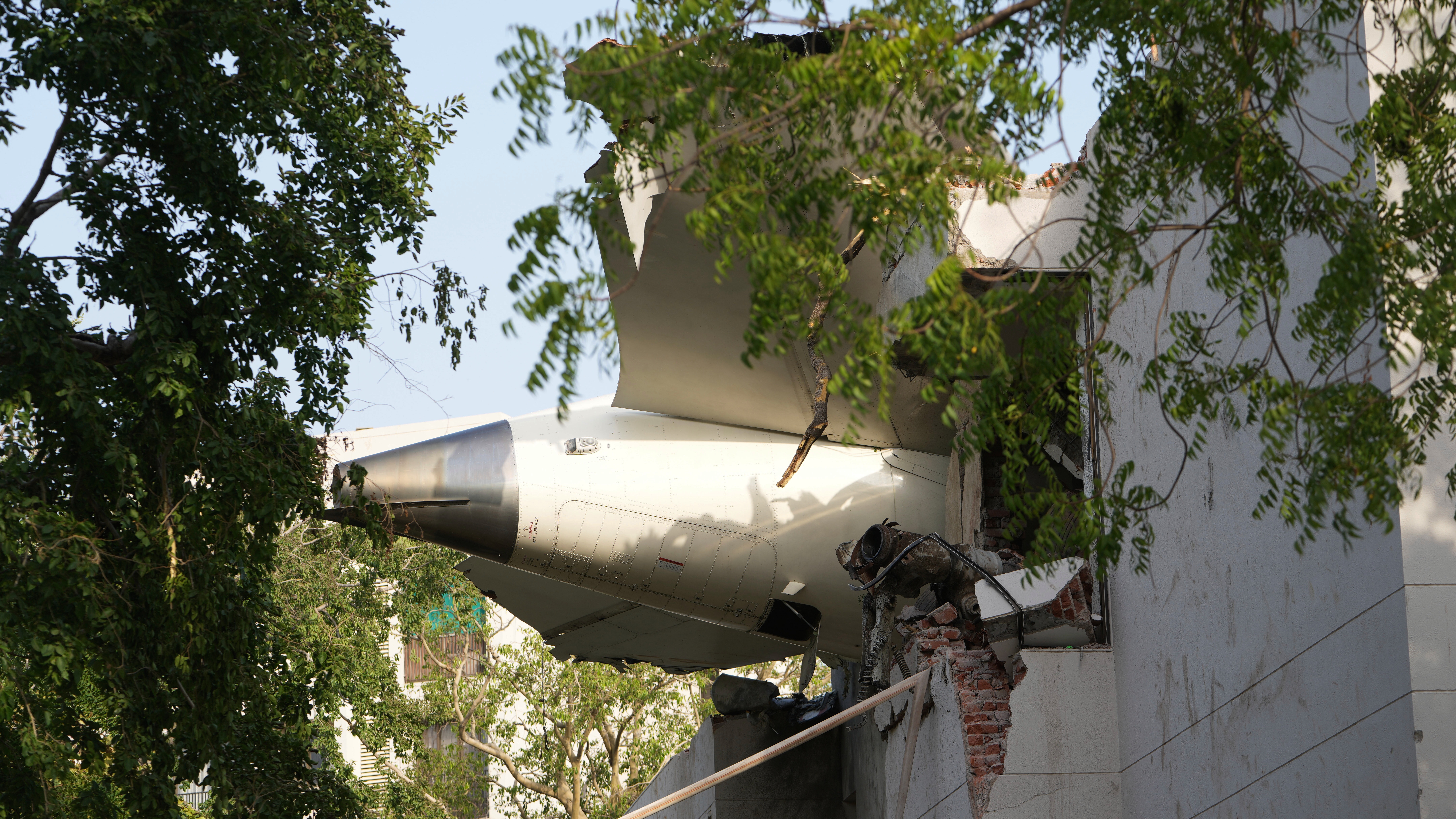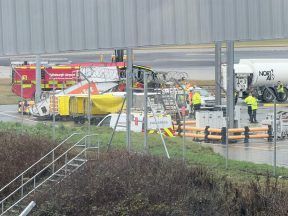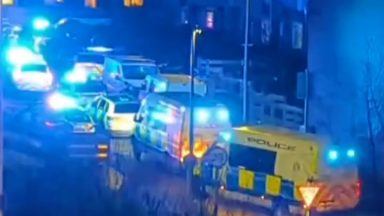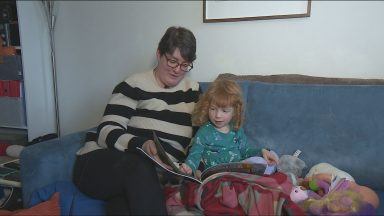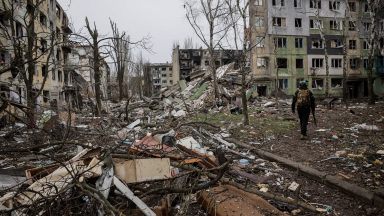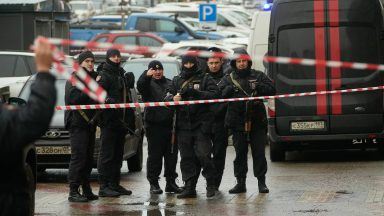One month after the tragedy, an early investigation into the accident has detailed a breakdown of the minutes leading up to the incident, which killed 260 people, as ITV News’ Sejal Karia reports.
A preliminary report into the Air India crash last month has found that fuel to the engines appears to have cut off shortly after takeoff.
According to the report, the switches in the cockpit which provide fuel to the engines turned to the CUTOFF position.
The engines tried to restart, but it was too late to prevent the Boeing 787 Dreamliner aircraft from crashing shortly after takeoff.
The Air India flight AI 171 departed from Ahmedabad Airport on June 12 and was heading towards Gatwick when it crashed into a residential area.
260 people died in the crash, including 241 on board and at least 19 on the ground. There was one survivor from the flight.
Under the International Civil Aviation Organisation, it is a requirement to file a preliminary report within 30 days of a crash.
Fuel gets cut off shortly after takeoff
According to the report, “Engine 1 and Engine 2 fuel cutoff switches transitioned from RUN to CUTOFF position one after another with a time gap of one second.
“The Engine N1 and N2 began to decrease from their take-off values as the fuel supply to the engines was cut off.”
In a voice recording from the cockpit, one of the pilots is heard asking the other why he had initiated the cut-off.
The other pilot then responds, saying he didn’t.
The fuel was then switched back on to both engines, with both engines restarting one after the other.
Engine 1 was able to restart and was able to reverse the deceleration that occurred as a result of the switch off. The report said the engine had “started to progress to recovery”.
Engine 2 on the aircraft restarted, but was unable to regain stable thrust. According to the report, the engine’s core continued to lose speed despite repeated attempts to boost power by reintroducing fuel. Although the engine relit, it could not accelerate enough to return to normal performance.
The pilot transmitted a call for ‘MAYDAY MAYDAY MAYDAY’ with the cockpit recording finishing six seconds later.

Design Concerns with Fuel Control Switches
The AAIB report highlights a 2018 FAA advisory (SAIB NM-18-33) warning operators about the potential for the fuel control switch locking mechanism to disengage.
Although not mandatory, the inspection recommended by the FAA was not performed by Air India, as it was considered advisory in nature.
The switches installed on VT-ANB were of the same design flagged in the advisory. Maintenance records showed no recent issues with the switches, and prior replacements in 2019 and 2023 were unrelated to fuel control.
Grief, Frustration and Fear of a Blame Game
Before the release of the report, ITV News met several bereaved family members. Many had already lost hope that any meaningful explanation would emerge.
A father, on the condition of anonymity, who lost his son in the crash told ITV News: “Nothing is coming out, and in all likelihood the pilot will be blamed for this accident. Neither Air India nor Boeing are going to be held responsible.”
Multiple families, speaking on condition of anonymity, also said they had not received any of the compensation that was publicly announced by Air India.
Several claimed the paperwork sent to them was confusing and too complicated for ordinary people to understand, adding to their distress.
Next Steps in the Investigation
The AAIB has not yet drawn final conclusions but has ruled out fuel contamination or bird strikes. The focus now shifts to:
- Crew actions and decision-making
- The functionality and possible malfunction of the fuel control switches
- Training protocols and cockpit ergonomics
Psychological and medical evaluations of the crew are also underway, and a full analysis of the aircraft’s human-machine interface will be part of the final report.
The AAIB emphasised that the findings are preliminary and subject to change as the investigation progresses.
The report also details a timeline of the flight before the fatal crash:
05.47.00 – The aircraft touched down at Ahmedabad airport after flying from Delhi.
06.25.00 – The flight crew underwent a breath analyser test and were found fit to operate.
07.05.00 – The crew is seen arriving at the boarding gate in CCTV recording.
07:43:00 – The aircraft requested pushback and startup.
07:43:13 – Air Traffic Control (ATC) approved pushback.
07:46:59 – ATC approved start-up.
07:49:12 – ATC queried if the aircraft required the full length of the runway. The aircraft confirmed the requirement of the full length of runway 23.
07:55:15 – The aircraft requested taxi clearance, which was granted by ATC.
08:03:45 – The aircraft was instructed to line up on the runway.
08:07:33 – The aircraft was cleared for takeoff.
Two minutes from takeoff to crash:
08:07:37 – The aircraft started rolling.
08:08:33 – The aircraft reached takeoff decision speed.
08:08:39 – The aircraft air/ground sensors transitioned to air mode, consistent with liftoff.
08:08:42 – Engine 1 and Engine 2 fuel cutoff switches transitioned from RUN to CUTOFF.
08:08:52 – Engine 1 switch transitioned from CUTOFF to RUN.
08:08:56 – Engine 2 switch transitioned from CUTOFF to RUN.
08:09:05 – A MAYDAY call was made by one of the pilots.
08:09:11 – Flight recorder stops, indicating the aircraft had crashed.
Footage from close to the crash shows large clouds of dark smoke rising up into the sky
In the minutes that followed, emergency services flocked to the scene of the accident as social media videos began circulating early reports of the tragedy.
Smoke was seen billowing from the wreckage as rescuers worked to recover survivors both on the ground and from the plane.
As the day went on, the scale of the disaster became apparent as the number of dead began to rise.
A 40-year-old British man was the only survivor who was onboard the aircraft.

Several people were also killed and injured on the ground after the aircraft struck a dining hall where medical students were having lunch at the time.
A month on, families of the victims are still waiting for details of what happened.
Air India’s chairman, Natarajan Chandrasekaran, described the incident as a “tragic accident” and a “devastating event.”
Tata Sons, the company that owns Air India, said it would offer around £86,000 to the families of each person who died in the plane crash.
They added that the company would cover the medical bills of those injured as a result of the incident.
Several safety issues have struck Boeing over recent years; however, this is the first time a Boeing 787 Dreamliner has crashed.
Follow STV News on WhatsApp
Scan the QR code on your mobile device for all the latest news from around the country


